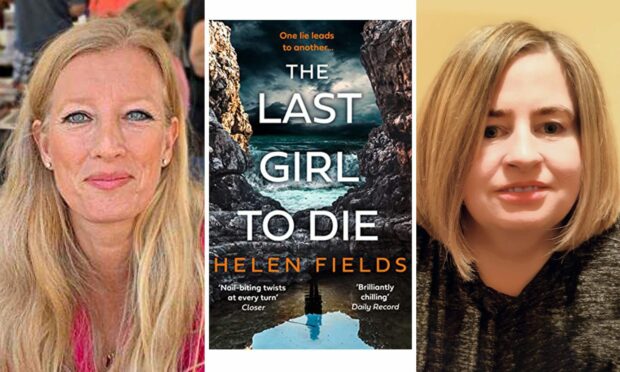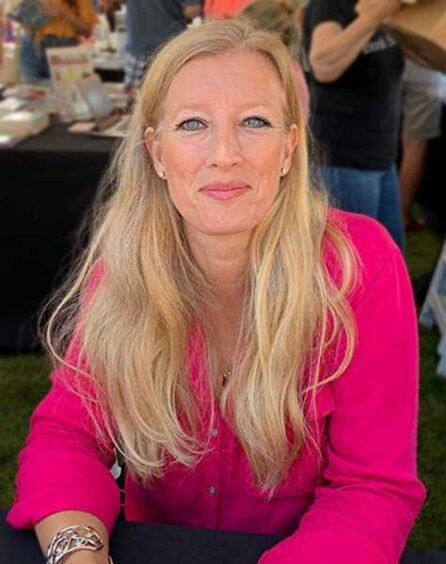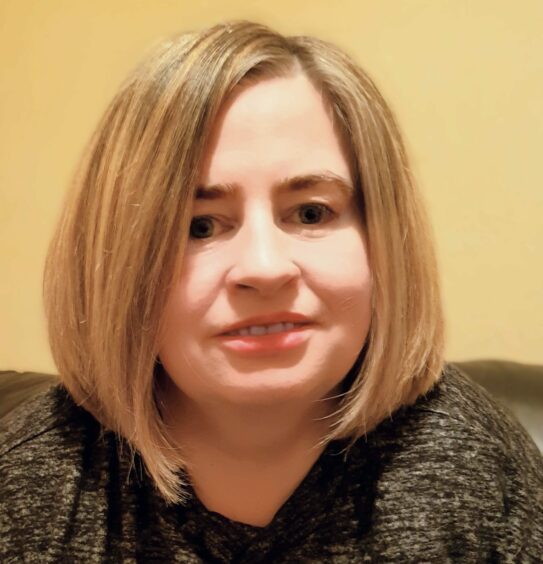A crime thriller set on the isle of Mull has been storming its way through the Amazon bestseller lists.
While the geography and history in The Last Girl to Die are accurate, the depiction of the islanders is not.
Author Helen Fields is based in West Sussex. Who better to review the book and interview Fields than a fiction fan with a special knowledge of the island?
Linda Boa was brought up on a farm on Mull where her family still live.
The blogger now stays in Oban. Her musings can be found at https://crimeworm.wordpress.com. She also posts on Twitter @crimeworm1.
Here Linda writes about the book and chats with Helen Fields.
Review and interview by Linda Boa
The Isle of Mull is a place where serious crimes do not generally occur – something for which the residents are thankful.
But when Helen Fields was looking for a setting for her latest crime novel, The Last Girl To Die, Mull seemed to fit the bill. It is also her husband’s favourite place in Scotland.
There were other things which made it a good fit too, and Helen was kind enough to talk me through them.
“I needed an island setting for this book to work, as the central theme is about the things that happen in small, isolated communities, she told me.
‘The Mull in my book is a very different place from the real island’
“Mull isn’t all that small, of course, but the Mull in my book is a very different place from the real island which is welcoming, friendly and forward-looking. Crime fiction, though, makes certain demands on its writers. So I had to make Mull a substantially more troubled place than in real life.
“The geography and history, I kept accurate. I wanted people to be able to visit the same island they’d read about.”
Fields began working life as a barrister specialising in criminal and family law. As an author she was previously best known for the DI Callanach series, set in Edinburgh.
But as she says, “The Last Girl To Die has been a very successful book, which I’m delighted about. It was a great experience to be able to leave my usual setting and write something based on a different location.”
At the heart of the story is a private investigator called Sadie Levesque, who specialises in tracking down missing teenagers.
She’s called to the island by American newcomers, the Clark family, whose daughter, Adriana, has gone missing.
But when Sadie discovers gaps in the Clarks’ past, she realises the family aren’t being completely open with her. She begins to wonder if someone from their past has caught up with them.
Witchcraft isn’t just a part of Mull’s history…
As she learns more about the island, and its history and folklore, it soon becomes apparent that witchcraft isn’t just a part of Mull’s history. It’s very much part of the island’s present day.
Helen says: “What I found really fascinating was the myths and legends of the island. Everything came from old folk tales and island lore. Mull’s witches feature prominently. The myths suggest that a powerful, intelligent and savvy race of women made themselves indispensable on Mull. That was part of what I wanted to write about.”
It’s a really gripping and action-packed thriller, and the stakes are raised even higher when another girl, Catriona Vass, the daughter of a local fisherman, goes missing too.
Local policeman, Sergeant Harris Eggo, is determined to blame the crimes on an outsider. But Sadie is convinced the person responsible is a member of the island’s population. When an unpleasant link to the crimes is left in her hotel room, she knows she is on the right track.
I asked Helen how the real inhabitants of Mull had reacted to having a starring role in a crime novel.
“The book has generally gone down well with Mull’s inhabitants and visitors, from what I’ve heard.
“There were one or two grumbles about how I’d portrayed the island, but anyone who read the author’s note I included will know that I hold Mull in the highest regard.
“I had the option to make my island a fictional place, of course. But I wanted to include so much of Mull’s history that there would have been too much appropriation involved. And honestly, I wanted to direct tourist traffic towards Scotland.”
You can buy or order The Last Girl To Die at your local bookseller for £7.99. The ebook is currently on special offer for Kindle for 99p.
Are you interested in more exclusive and breaking Highland and Islands news from the P&J? If so, why not join our dedicated Facebook page here





Conversation